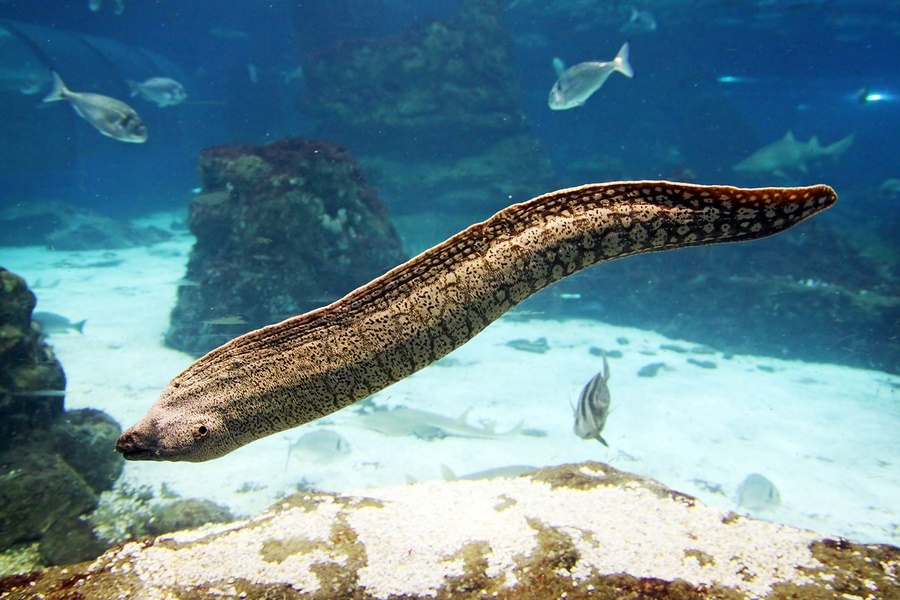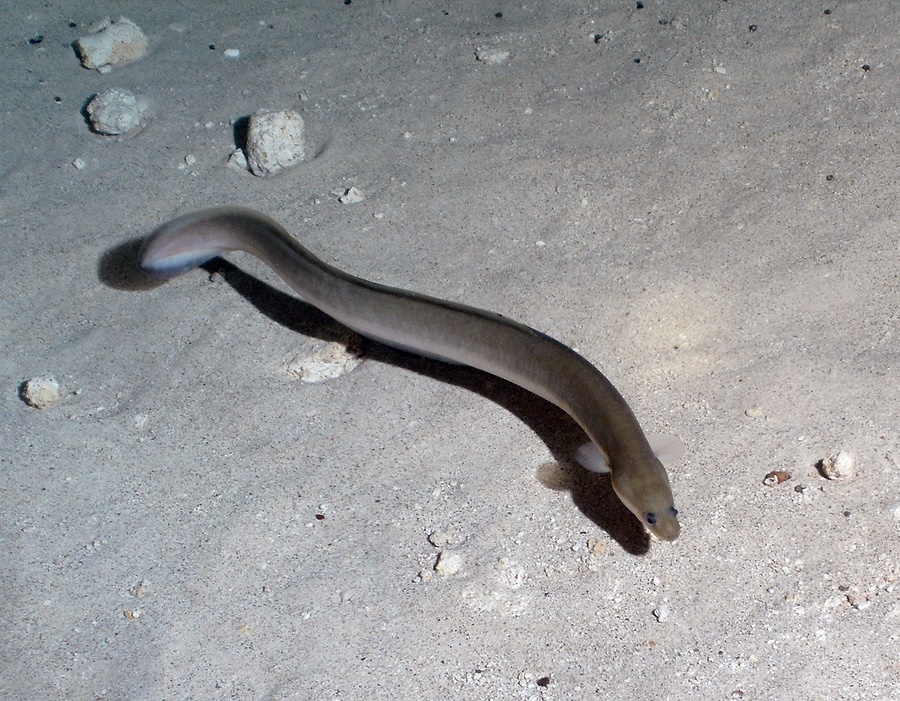Table of Contents
To fully know the answer to how many species of eels are there, we must discuss a lot of things. First, there are really little known facts about the reproduction of most of these fish as they are readily available to be bred in captivity. Two freshwater eels belonging in the Anguillidae family are easily available for aquatic hobbyists. While the European Eel Anguilla Anguilla as well as the American Eel Anguilla rostrata typically live in the freshwater but could also spawn in the ocean. The Swamp Eels belonging in the Synbranchidae are often found in ponds as well as swamps. These fish spawn in shallow water, they lay hundreds of free-floating eggs that usually gather together in bubbles.
Quarrelsome Eels
Your eels might become quarrelsome if they live in an over-crowded place, although many of them are kept together as juveniles. During their adult years, they would become aggressive solitary predators. They would eat slower moving as well as smaller fish. You should only keep species which are similar in size. Many of those belonging to the true eels are only suitable to be kept in a home aquarium as juveniles. When they become adults, they become too large to be kept there. Their life span heavily depends on their individual species. This article would give you a great overview about the popular species for beginners as well as discussing the answer for how many species of eels are there.
About the Moray Eel
Muraenidae, or the Moray eels, belong to the family of eels in the Anguilliformes family. This family has 16 genera that are composed of around 200 species. Of all of these 200 species, 12 of these are suitable to be kept in a home aquarium, however, only five of which are only safe to be housed with other fish. Snowflake (Echidna nebulosa) and the Zebra Moray (Gymnomuraena zebra) are the two most popular species that belong to the restricted section.
This Moray could be easily found across the globe, however, they are exclusive to coral reefs in the tropical parts of the region. Most of these eels are considered as marines but few of these only live in sort of brackish water. Eels come in varying range. Some of them have vibrant colors while some are only muted. These eels have intricate designs instead of having a block color. Some would only eat fish while some eat crustaceans.
Weight and Size
The weight and size greatly differ between the species. Some of the misconception about this Moray eels are due to their snake-like appearance as well as their appearance in TV, but these are very unjustified.
People think that eels are very aggressive because this animal spend most of their time looking as they are ready to bite people or even animals. But, they need to keep their mouth open to respire, because they are senind water to the gills at the rear of their heads.
Wild Caught Fish
This is typically harder to buy compared to other common fish. You can’t really find it in a local pet store. You need to look for specific aquatic stores. When you find something that you want, you may need to wait for while because they are not easily available. It is very hard for a place to store this eel because they would need to rely on wild caught fish because they are very difficult to breed in captivity.
Cost of Eels
The prices for this pet would greatly vary on the species as well as the size of the Moray that you want. A factor that is also great is the person that you buying it from. To answer the question, how many species of eels are here? The price of the most and many popular species would cost around $25 up to $100, however, the larger, rarer species could cause you over a hundred dollars.
Appearance of Moray Eel
Most people can easily picture a Moray. They could easily describe it as having beady eyes, large mouth, and a long, snake-light form that plays a big role in making them look like a villain that came from the ocean.
Most parts of their body looks like devoid of anatomical structures, because most of them lack both the pelvic as well as pectoral fins. A big exception for this is their dorsal fin. This fin start from the base of their head up to their tail where it would fish with their anal and caudal fins. Another notable characteristic is their lack of scales but is replaced with thick, tough skin. There is a great number of goblet cells that are embedded in their skin. These are used to secrete mucus across their body.
Eyesight
You can never really determine the sex of the eel with your naked eye. It is very difficult to breed them in captivity. However, they are not really dependent on their eyesight since they have a greatly evolved acute sense of smell in order to detect their prey.
Mouth and Jaws
Under their eyes is a well-developed mouth. Their mouth usually remains open. They have a small head which could mean that the Morays would be unable to have the pressure that is required to swallow their prey, however, this problem is easily solved with a second set of jaws that we call pharyngeal jaws. These jaws are brought up to the front of their mouth in order to grab prey and pull it into the body.
Gills
They have gills which can be found at the rear of their head. These gills are usually round and small. They need to keep their mouth open to supply the gills with water that is used for respiration. There are over 200 species for this kind, you can expect that there is varying appearance between them. You can see the difference in sizes, body patterns, as well as jaw structures.
The Giant Moray
The winner in the category of longest is the slender giant Moray, also called the Strophiodon sathete, it reached 13 feet. Meanwhile, the smallest is the Snyder’s Moray, also called the Anarchias leucurus, that is only 4.5 inches. Their jaw types could change depending on their diet. When these eels feed on crustaceans, they have shorter, rounded jaws with molar-like teeth. It allows them to break through a hard shell. This is different from pointed jaw coupled with longer teeth that is used to eat ffish such as the larger Gymnothroaxspecies. Many of these Morays have a distinctive look which could make them easily identifiable. They have a striking pattern or even a vibrant color. The common name of this species would give you a good idea of its appearance.
How Many Species of Eels Are There?
Listed below are just some variety of the Moray Eel:
Chainlink Moray Eel
They could grow up to 30 inches long. They eat fish, they have black skin that is covered in yellow stripes.
Giant Moray Eel
They reach up to 9.8 feet, considered as one of the largest. They are brown, speckled version that mainly eats crustaceans.
Green Moray Eel
This eel could fool your eye, it could look like yellow or green, well depending on your perception. It stands at 8-feet tall that would allow it to eat big fish.
Snowflake Moray Eel
This variation of the Moray eel is popular home aquarium. The main reason for this is their white, black, and yellow coloration. They could reach up to 39 inches and eats most meaty foods.
Spotted Moray Eel
This variation is pretty attractive because of their densely packed spots. It is 6 foot long that eats crustaceans or fish.
Zebra Moray Eel
It has black and white stripes that runs around its 20 inch body. This eel feeds exclusively on crustaceans.
The question to how many species of eels are there have now been answered – and we can say it is a lot. We have already given you the most common species of the Moray eels, but the list does not end there! There are still other types of eels that we will share with you in other posts, so stay tuned!






 Author and long-time animal lover. Sharing knowledge on pet care through experience and the written word.
Author and long-time animal lover. Sharing knowledge on pet care through experience and the written word.